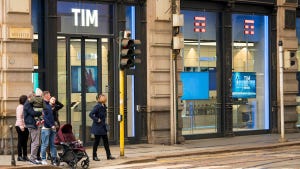Iliad to Ramp Up Spending in France This Year
French telco plots a sharp increase in capital expenditure on the back of continued earnings growth in 2016.

French telco upstart Iliad has piled pressure on to its domestic rivals by announcing plans for a sharp increase in capital expenditure this year and next.
The operator, which provides fixed and mobile services in France, said it would invest between €1.4 billion ($1.5 billion) and €1.5 billion ($1.6 billion) in its domestic business annually in 2017 and 2018, after stripping out spending on frequency licenses.
That would represent an increase of between 7.7% and 15.4% on the amount it spent last year and equal about 30% of revenues in 2016.
Such a capital expenditure boost looks dramatic given that many service providers have been cutting back on investments amid concern about the economic outlook and following a wave of spending on the rollout of 4G and fiber-based networks.
Chief rival Orange (NYSE: FTE) recently told analysts that it expects to plow about 17% of its revenues into capital expenditure this year -- about the same proportion it spent in 2016. (See Orange Hints at 2017 Capex Rise as Spain Buoys 2016 Sales.)
The French incumbent, which operates networks across a number of European, African and Middle Eastern markets, reported revenues of €40.9 billion ($43.3 billion) for the 2016 fiscal year and expects to generate the same amount in 2017.
Iliad (Euronext: ILD) has not provided any sales guidance for 2017 but saw its revenues increase by 7% last year, to about €4.7 billion ($5 billion), with consolidated EBITDA up 12.5%, to nearly €1.7 billion ($1.8 billion), and net profit up 20.2%, to €403 million ($426 million).
Following the publication of full-year results, Iliad's share price was trading up 1.5% in Paris at lunchtime on Tuesday.
The sales growth owed much to Iliad's strong performance in France's mobile market last year.
After entering the mobile sector in early 2012 under the Free brand, the operator was widely blamed for triggering a price war in the market that took a heavy toll on its longer-established competitors.
While conditions have recently improved for those players, Orange, Numericable-SFR and Bouygues Telecom continue to lose out to their younger challenger.
Orange, for example, saw its French mobile revenues fall by about 3% in 2016, to around €8 billion ($8.5 billion), while Iliad reported an 11.7% sales increase at its mobile business, to more than €2 billion ($2.1 billion).
If the story has not been quite as rosy for Iliad it is in the fixed-line market, where its sales rose by a less impressive 3.6% in 2016, to about €2.7 billion ($2.9 billion), and its customer base grew by 300,000, to around 6.4 million.
Orange, by comparison, grew its fixed broadband revenues by 4.8% in 2016, to about €4.4 billion ($4.7 billion), and added 417,000 new broadband subscribers, giving it nearly 11.2 million in total.
Iliad's focus, however, is clearly on shifting customers on to its higher-speed fiber-to-the-home network. That served about 310,000 subscribers at the end of December, said the company, but the objective is to boost customer numbers by 200,000 this year and by 300,000-500,000 annually in the "medium term."
For all the latest news from the wireless networking and services sector, check out our dedicated Mobile content channel here on Light Reading.
While heavier spending should help the operator to realize these goals, much of the investment seems likely to get channeled into Iliad's mobile business. Its 4G network, for instance, is to cover 85% of the population by the end of this year, said the company, up from 76% today.
By expanding the coverage of its own networks, and cutting its dependency on "roaming" agreements with rivals, Iliad reckons that from 2020 onwards it will be able to generate more than €1 billion ($1.1 billion) annually in "EBITDA less capex" in France, as well as a consolidated EBITDA margin of 40%.
Such improvements would be even more dramatic than Iliad's spending boost. EBITDA minus capital expenditure was about €390 million ($412 million) last year, while the consolidated EBITDA margin stood at roughly 35%.
It clearly helps that Iliad remains one of the least indebted operators in Europe, with a net-debt-to-EBITDA margin of less than 1. The equivalent ratio at Orange is 1.93, while most of Europe's incumbents report ratios of between 2 and 3.
Iliad had little to say about its ambitions in Italy, where it is set to become the fourth mobile network operator as a result of last year's merger between 3 Italia and Wind Telecomunicazioni SpA .
As a condition of that deal, regulators insisted that Hutchison and VimpelCom Ltd. (NYSE: VIP), the respective owners of 3 Italia and Wind, sold assets to another player, with Iliad emerging as the eventual buyer.
Iliad says it is targeting a market share of 10% in the country, but its imminent market entry has prompted concern that Italy's mobile operators are in for a rough ride. (See Italian Fear of Iliad May Be Overblown.)
— Iain Morris, 

 , News Editor, Light Reading
, News Editor, Light Reading
Read more about:
EuropeAbout the Author(s)
You May Also Like












